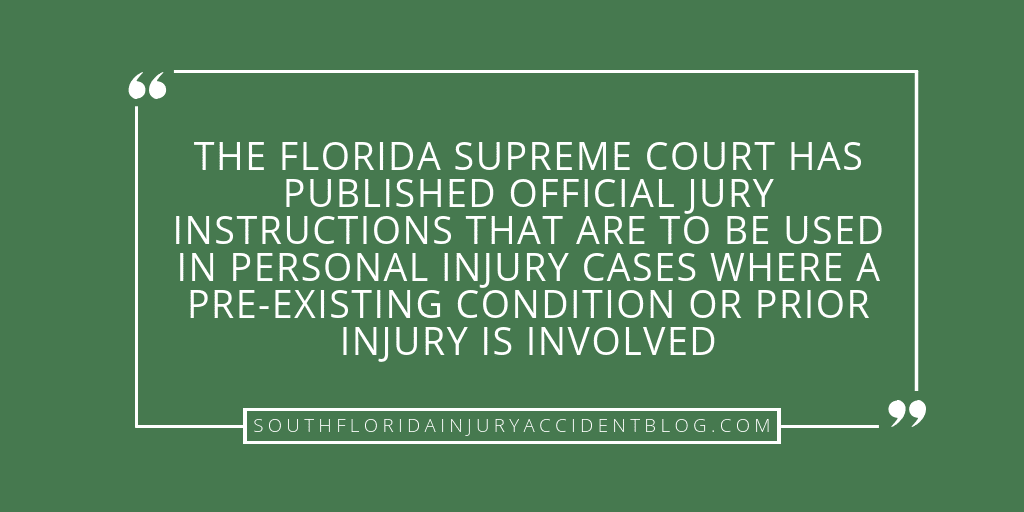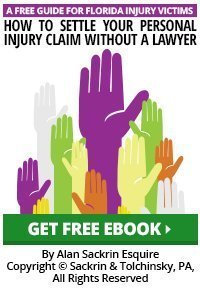Last Update: 11/6/21
A few years ago, there was a lot of discussion about “pre-existing conditions” in the news media as part of discussions on the impact of Obamacare; however, for accident victims pursuing claims for injuries to shoulders, hands, ankles, wrists or other severe harm like TBI (traumatic brain injuries) and spinal cord injuries, the issue of a “pre-existing condition” or “pre-existing injury” involves different concerns.
Victims with a personal injury claim, are concerned about this issue from the standpoint that defense counsel may challenge them with an allegation that their injuries and need for medical care coverage (therapy needs, rehabilitation care, lost wages, etc.) are not due so much to the current injury or accident, but due to something else altogether.
Pre-Existing Injury – Can The Defense Try and Use It to Bar Recovery of Damages?
The defense can and will, if possible, point at a pre-existing condition or prior injury, as a reason that the jury should side with the defense and not pay damages for the plaintiff’s claim no matter how severe and serious they may be. However, Florida law protects plaintiffs and claimants in this situation. Under Florida law, the existence of a prior condition does not automatically bar a personal injury claim award. In fact, the Florida Supreme Court has published official Jury Instructions that are to be used in personal injury cases where a pre-existing condition or prior injury is involved.
Read: Aggravation of a Pre-Existing Condition
Florida Supreme Court’s Instructions to Juries
The Courts are required to use the following instructions to juries – judges (and trial lawyers) are given notes from the Florida Supreme Court on how these instructions are to be used in a particular case. These instructions control what the jury will use in deciding the damage amount awarded to the injury victim.
Read: Hard To Prove Personal Injury Cases

From Florida Supreme Court Jury Instruction 501.5:
501.5 OTHER CONTRIBUTING CAUSES OF DAMAGES
a. Aggravation or activation of disease or defect:
If you find that the (defendant(s)) caused a bodily injury, and that the injury resulted in [an aggravation of an existing disease or physical defect] [or] [activation of a latent disease or physical defect], you should attempt to decide what portion of (claimant’s) condition resulted from the [aggravation] [or] [activation]. If you can make that determination, then you should award only those damages resulting from the [aggravation] [or] [activation]. However, if you cannot make that determination, or if it cannot be said that the condition would have existed apart from the injury, then you should award damages for the entire condition suffered by (claimant).
NOTE ON USE FOR 501.5a
This instruction is intended for use in situations in which a preexisting physical condition is aggravated by the injury, or the injury activates a latent condition. See C. F. Hamblen, Inc. v. Owens, 172 So. 694 (Fla. 1937). When Instruction 501.5a is given, Instruction 401.12b (Concurring cause) is necessary. See Hart v. Stern, 824 So. 2d 927, 932–34 (Fla. 5th DCA 2002); Auster v. Gertrude & Philip Strax Breast Cancer Detection Institute, Inc., 649 So. 2d 883, 887 (Fla. 4th DCA 1995).
b. Subsequent injuries/multiple events:
You have heard that (claimant) may have been injured in two events. If you decide that (claimant) was injured by (defendant) and was later injured by another event, then you should try to separate the damages caused by the two events and award (claimant) money only for those damages caused by (defendant). However, if you cannot separate some or all of the damages, you must award (claimant) any damages that you cannot separate as if they were all caused by (defendant).
NOTES ON USE FOR 501.5b
- Instruction 501.5b addresses the situation occurring in Gross v. Lyons, 763 So. 2d 276 (Fla. 2000). It is not intended to address other situations. For example, see Stuart v. Hertz Corp., 351 So. 2d 703 (Fla. 1977), and Eli Witt Cigar & Tobacco Co. v. Matatics, 55 So. 2d 549 (Fla. 1951). The committee recognizes that the instruction may be inadequate in situations other than the situation in Gross.
- The committee takes no position on whether the subsequent event is limited to a tortious event, or maybe a nontortious event.
c. Subsequent injuries caused by medical treatment:
If you find that (defendant(s)) caused [loss] [injury] [or] [damage] to (claimant), then (defendant(s)) [is] [are] also responsible for any additional [loss] [injury] [or] [damage] caused by medical care or treatment reasonably obtained by (claimant).
NOTE ON USE FOR 501.5c
This instruction is intended for use in cases involving additional injury caused by subsequent medical treatment. See, e.g., Stuart v. Hertz Corp., 351 So. 2d 703 (Fla. 1977); Pedro v. Baber, 83 So. 3d 912 (Fla. 2d DCA 2012); Tucker v. Korpita, 77 So. 3d 716, 720 (Fla. 4th DCA 2011); Nason v. Shafranski, 33 So. 3d 117 (Fla. 4th DCA 2010); Dungan v. Ford, 632 So. 2d 159 (Fla. 1st DCA 1994).
What Should You Do?
A good piece of advice if you have been harmed and have a pre-existing injury, is to speak with an experienced personal injury trial lawyer who has spent years evaluating accident facts, applying the law, and asking juries to render a favorable verdict for his clients. Most personal injury lawyers, like Alan Sackrin, will offer a free initial consultation (over the phone or in-person) to answer your questions, including what to include in a demand letter.
Related:
_______________
 Do you have questions or comments? Then please feel free to send Alan an email or call him now at (954) 458-8655.
Do you have questions or comments? Then please feel free to send Alan an email or call him now at (954) 458-8655.
